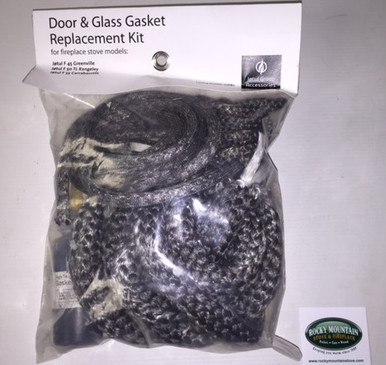Re-reading this thread is causing a flare-up in my PTSD. You may recall I had three Jotul Firelights, albeit the older Firelight 12, from which the castings for your stove were derived. Between the need for full rebuilds (as you are doing now), and the absolutely insane months-long delivery times from Scandanavia, I had to keep three stoves in the house just to ensure I'd always have two operable. You'd have done well to snag that $1k unit, if you intend to stay with this exercise in self-torture.
The good news for you is that, while these cemented cast stoves are all maintenance queens compared to welded steel boxes, when it is repaired, at least it's a good performer. My F12's had some fundamental design flaws that, even when in good working order, limited my adoration of them. In a conversation with an engineer at Jotul many years ago, they told me the F600 used the same casting patterns as the F12, with modifications to accommodate the new internals.
Yes, the ash pan door was a constant point of worry, and in fact you'll find many prior Firelight owners just didn't use it, preferring to just let it pack solid with ash in an effort to prevent the leaks that cause the observed damage to the inner bottom. I always used my ash pan, actually thought it was a pretty nice system, but it did take extra attention and care with that gasket. And for the love of God, NEVER open that ash pan door after loading fresh wood, lest the gasket fail then, and turn your fully-loaded stove into a forge. I would only ever touch that door at the end of a load, emptying ashes BEFORE loading new wood.
Getting the gasket just right on the double doors also takes some attention, if I recall the middle seam used a different size (eg. 3/16") vs. the primary door gasket (1/4").


![[Hearth.com] Jotul F600 needs another rebuild... [Hearth.com] Jotul F600 needs another rebuild...](https://www.hearth.com/talk/data/attachments/299/299889-2f6edc1f10bf2eed1be37769cdcddc89.jpg?hash=c69YK7NwrB)

![[Hearth.com] Jotul F600 needs another rebuild... [Hearth.com] Jotul F600 needs another rebuild...](https://www.hearth.com/talk/data/attachments/300/300876-217fd3fc58e30b4c56ccf593ed785bcf.jpg?hash=u2jR_JQiYx)
![[Hearth.com] Jotul F600 needs another rebuild... [Hearth.com] Jotul F600 needs another rebuild...](https://www.hearth.com/talk/data/attachments/300/300877-9886139a3fe77a5da9bc120fd8d8978f.jpg?hash=yixLeAIe8F)